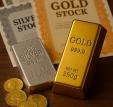Fibonacci Phi Mate Analysis & Market Turns
Below we show all the Fibonacci phi mate turn dates so far for 2005 and 2006. The yellow arrows show the trend reversal that occurred each time. The April 17th, 2006 phi mate turn date was a bottom that produced a 596 point rally that led to the highest intraday close to that point since January 14th, 2006 on May 10th at 11,670.19. At that May 10th top we saw the last of a series of Hindenburg Omens that forecast the next declining trend into June/July. The most recent phi mate turn date was August 11th, 2006 and so far that has produced a 653 point rally into September 29th's intraday high of 11,741. It is now time to study the next Fibonacci phi mate turn date on our calendar. It is scheduled for October 24th, 2006 +/- a day or so.

October 24th's turn has two phi mates, not just one. We have found that turn dates with two mates tend to have more significance, either starting a large trend, or ending one. In addition to that interesting tidbit, both of its phi mates were in themselves significant turns, which increases the probability that October 24th will be a major turn. What we do not know is if it will be a bottom or a top. But it will be a turn. Here's the math:
October 24th, 2006 is 1,704 trading days from January 14th, 2000's all-time top in the Dow Industrials, both in real and nominal dollars. March 24, 2004's significant low is 1,053 trading days from January 14th, 2006. October 24th, 2006 is 651 trading days from March 24th, 2004. The ratio 651 to 1,053 is phi, .618. The ratio 1,053 to 1,704 is also phi, .618. The ratio 651 to 1,704 is 1.0 minus phi = .382. The second phi mate for October 24th, 2006 is August 22nd, 2002's major high. August 22, 2002 was 654 trading days from January 14th, 2000, and is 1,050 trading days from October 24th. The ratio 654/1704 = .383, very close to .382, and the ratio 1050 to 1704 is .616, approximately phi.
What is so special about January 14th, 2000? Yes, the Dow Jones Industrial Average topped then, six + years ago, but so what? Yes, it can be said that January 14th, 2000 marked the official start of a primary Dow Theory Bear market. Again, what's the big deal?
Since this dramatic date, every single market top or bottom of measurable significance has occurred precisely in a Fibonacci .618 to .382 ratio of trading days from either that starting date 1/14/00, or another top or bottom that has occurred since 1/14/2000, based upon closing balances. This is astonishing! A mathematical formula has been 100 percent correct in predicting market tops or bottoms in the Dow Industrials since the Dow Theory Bear market began on January 14th, 2000! Each, an exact Fibonacci ratio number of trading days from the Bear's start and from another top or bottom during that Bear. We sometimes don't forecast a turn that arrives because its phi mate is smaller than our radar screen searches for, but once the turn is known, a small top or bottom that is a Fibonacci phi mate ratio with it and 1/14/00 can be more easily identified. May 10th, 2006's top had a small phi mate in the low from 6/13/02. July 18th's turn is a phi mate of a small top, which was actually the top of the right shoulder of a small head and shoulders pattern on January 26th, 2004. Our interest is in identifying the obvious trend turns so we can factor that into our trading strategies that include our key trend-finder indicators.
For those of you unfamiliar with Fibonacci numbers and ratios, and our phi mate analysis, here is the thumbnail sketch. For a more detailed explanation, visit our archives at www.technicalindicatorindex.com and pull down issue no. 266.
While Fibonacci numbers and ratios have existed since the Creation, a 12th century mathematician, Leonardo Fibonacci, is largely credited with identifying the unique sequence and ratios, and their prevalence throughout nature.
The sequence goes like this: It starts with the number 1 and then adds that number to itself to get the next number. It then takes those two numbers and adds them together to get the next number in sequence. Each number next in sequence is the sum of the prior two numbers in the sequence, ad infinitum. Thus the sequence looks like this: 1, 1, 2, 3, 5, 8, 13, 21, 34, 55, 89, 144, 233, 377, 610, 987, 1,597, etc… The ratios between these numbers are unique in that each addend is either .382 or .618 of the sum. For example, 13 plus 21 equals 34. 21 is .618 of 34. 13 is .382 of 34. .618 plus .382 equals a complete 1.00. This holds true for all pairs. These pairs are known as phi mates. What is so amazing is that market price and time movements are also dominated by Fibonacci numbers and ratios. About three years ago, we took notice that when the Dow Industrials ended their two-decade Bull Marketon January 14th 2000, something spectacular occurred. It was as if that date was to become one of the most meaningful in the history of the markets. Yet, no one that I am aware of identified it as such.

The chart above identifies a 10 trading day period where there are five previous tops or bottoms that are a Fibonacci number of trading days away from October 18th through October 31st, 2006. Our experience with clusters is, the more tops or bottoms that occur, and the tighter the range of the cluster, the higher the probability a turn is arriving a day or so from that cluster range. Interestingly, our next Fibonacci phi mate turn date occurs smack in the middle of this cluster, October 24th, +/- a few days. Our last cluster was August 9th through August 17th, 2006, with an estimated phi mate turn date of August 14th, which ended up being a trend turn one day earlier, on August 11th, fitting the parameters of both the phi mate estimated date and the cluster.
Here are the Cluster dates coming up:
- August 11th, 2006's bottom is a Fibonacci 55 trading days from Monday, Oct 30th, 2006.
- November 25th, 2005's top is a Fibonacci 233 trading days from Tuesday, Oct 31st, 2006.
- May 9th, 2005's top is a Fibonacci 377 trading days from Wednesday, Oct 18th, 2006.
- May 17th, 2004's low is a Fibonacci 610 trading days from Wednesday, Oct 18th, 2006.
- November 11th, 2002's low is a Fibonacci 987 trading days from Tuesday, Oct 31st, 2006.
www.technicalindicatorindex.com and click on the button
at the upper right of the Home Page.
Check Out Our September Subscription Specials.
And bestowed on Him the name which is above every name,
That at the name of Jesus every knee should bow,
Of those who are in heaven, and on earth, and under the earth,
And that every tongue should confess that Jesus Christ is Lord,
To the glory of God the Father."
Philippians 2:9-11
Robert D. McHugh, Jr. Ph.D.
Main Line Investors, Inc.
Robert McHugh Ph.D. is President and CEO of Main Line Investors, Inc., a registered investment advisor in the Commonwealth of Pennsylvania, and can be reached atwww.technicalindicatorindex.com. The statements, opinions and analyses presented in this newsletter are provided as a general information and education service only. Opinions, estimates and probabilities expressed herein constitute the judgment of the author as of the date indicated and are subject to change without notice. Nothing contained in this newsletter is intended to be, nor shall it be construed as, investment advice, nor is it to be relied upon in making any investment or other decision. Prior to making any investment decision, you are advised to consult with your broker, investment advisor or other appropriate tax or financial professional to determine the suitability of any investment. Neither Main Line Investors, Inc. nor Robert D. McHugh, Jr., Ph.D. Editor shall be responsible or have any liability for investment decisions based upon, or the results obtained from, the information provided.

















